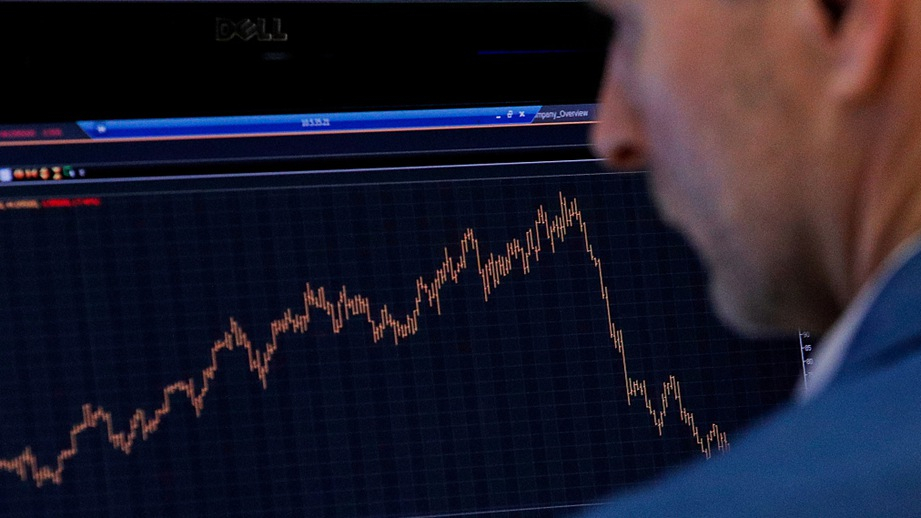

Renewed trade fears fueled by U.S. President Donald Trump’s plan on Thursday to impose 10 percent tariffs on 300-billion-U.S.-dollars' worth of Chinese imports starting September 1, sent the benchmark S&P 500 Index and Nasdaq to their worst weekly percentage plunges since December.
The blue chip Dow and the S&P 500 hit their lowest levels since late June, with the S&P 500 and the Nasdaq registering their fifth consecutive day of losses.
U.S. 10-year Treasury yields also saw their steepest weekly decline in over seven years.
On Friday, Chinese Foreign Ministry spokesperson Hua Chunying stated that China strongly opposes the U.S.' plan to impose additional tariffs, and will take necessary countermeasures to defend its interests.
"China's position is very clear that if U.S. wishes to talk, then we will talk, if they want to fight, then we will fight," said Zhang Jun, China’s new ambassador to the United Nations.
Red flags in the U.S. stock market
"Trump is tweeting about hawkish trade policies and the market is going down because of it," said Matthew Keator, managing partner at the Keator Group in Lenox, Massachusetts.
Investors were spooked by the prospect of a looming recession.
The Dow Jones Industrial Average fell 98.41 points, or 0.37 percent, to 26,485.01, the S&P 500 lost 21.51 points, or 0.73 percent, to 2,932.05 and the Nasdaq Composite dropped 107.05 points, or 1.32 percent, to 8,004.07.
Of the 11 major sectors in the S&P 500, eight closed in the red.
Technology companies, which get a sizable portion of their revenue from China, were the hardest hit, falling 1.7 percent.
Declining issues outnumbered advancing ones on the NYSE by a 1.77-to-1 ratio; on Nasdaq, a 2.21-to-1 ratio favored decliners.

Job growth in the U.S. slowed and work hours were cut by manufacturers, which could indicate that the employers are pulling back. Photo: VCG
Slower hiring, shorter workweeks in the U.S.
Influenced by the escalated trade tension between China and the U.S., and the slowing global growth, the U.S. job market is also showing red flags.
Job growth in the U.S. slowed in July and manufacturers slashed hours for workers.
Job gains over the last three months averaged 140,000 per month, the fewest in nearly two years, compared to 223,000 in 2018.
Underscoring the moderation in hiring, the average workweek fell to its lowest level in nearly two years in July as manufacturers cut hours for workers. Hours were also reduced in other industries, contributing to the workweek's drop to 34.3 hours, the fewest since September 2017, from 34.4 hours in June.
"The decline in hours worked suggests that employers may be pulling back more than headline hiring would suggest," said Andrew Schneider, a U.S. economist at BNP Paribas in New York.

The manufacturing industry and business investment in the U.S. have both been hit by the trade tension. Photo: VCG
Manufacturing and trade taking a hit
The U.S.-China trade war is taking a toll on manufacturing, with production declining for two straight quarters. Business investment has also been hit, contracting in the second quarter for the first time in more than three years and helping to hold back the economy to a 2.1 percent annualized growth rate. The economy grew at a 3.1 percent pace in the first quarter.
The White House's "America First" policies are also restricting trade flows. A separate report from the Commerce Department on Friday showed sharp declines in both imports and exports in June, leading to a 0.3 percent dip in the trade deficit to 55.2 billion U.S. dollars during the month.
(With input from Reuters)

Copyright © 2018 CGTN. Beijing ICP prepared NO.16065310-3
Copyright © 2018 CGTN. Beijing ICP prepared NO.16065310-3